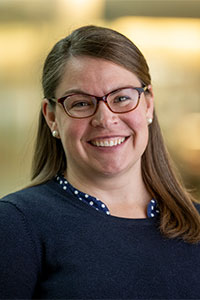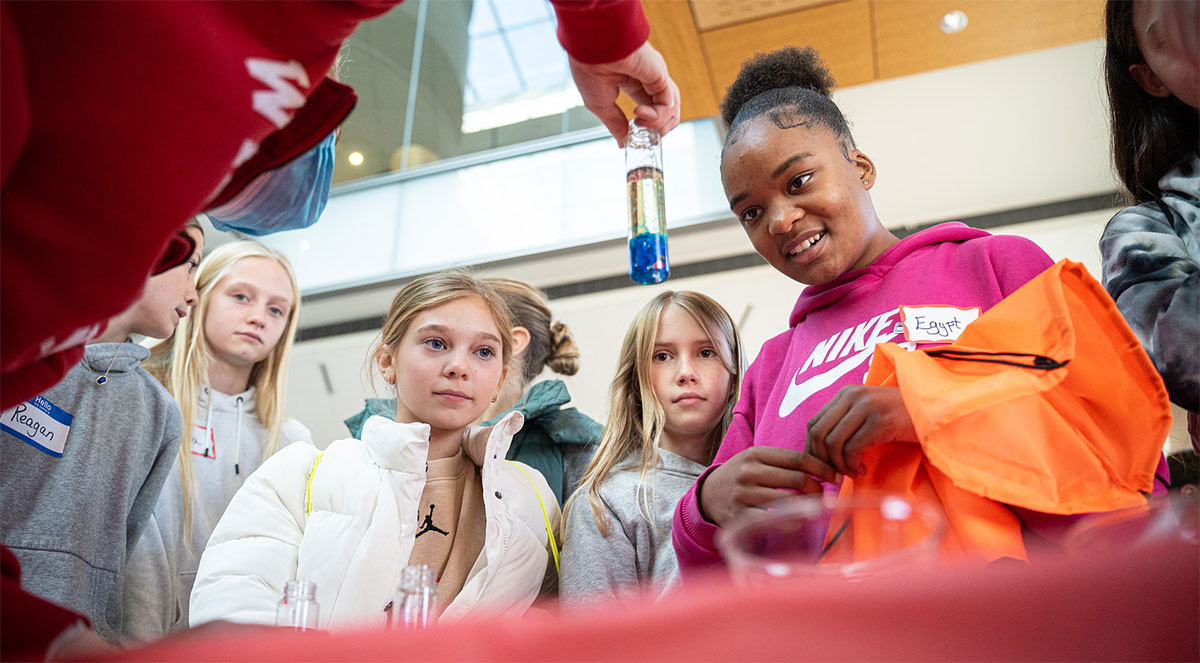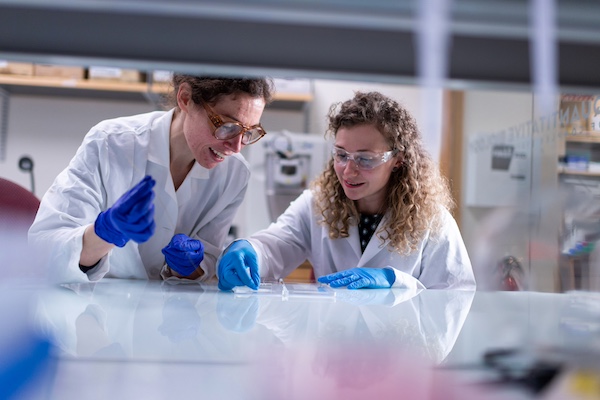A collaboration between the Morgridge Institute for Research and partners scattered across the UW–Madison campus is unlocking new, tailored science learning opportunities for thousands of Wisconsin schoolchildren.
The partnership between science outreach offices streamlines the way K-12 field trips are scheduled and conducted, ensuring that teachers and students make the highest, most productive use of their time on campus to learn STEM concepts.

“We want to make it easy for the students and teachers to make it to campus,” says Wes Marner, Morgridge’s engagement, education, and equity director. “We’ve brought it together as a cohesive set of STEM field trips, working together across campus to serve teacher and student needs, instead of having a whole lot of pop-up silos doing it on their own.”
In its pilot year, the collaboration brought about 3,600 students to campus, and that number is expected to grow to at least 5,000 a year.
In the past, K-12 classes might schedule a separate field trip to the Geology Museum and possibly try to set up another venue. But in the new, coordinated system, they can be more intentional and make their time on campus more fulfilling by conveniently arranging a whole day of activity.
Val Blair, Morgridge senior community engagement coordinator, says science outreach staffers work together to set up customized field trip itineraries.

“We want to maximize the amount of STEM exploration they get in one day on campus,” Blair says. “We know transportation costs are high, so we want to make sure they get a great day filled with the experiences that their teachers feel will satisfy their curriculum.”
Julie Traxler, who teaches second graders at Madison’s Dr. Virginia Henderson Elementary School, says the new system made setting up her class field trip simple.
“I really appreciate how easy it was to coordinate and add on the fossil excavation, which I’d never heard of. I love going to one spot and finding all the available science trips,” she says.
The collaboration involves 11 science-related campus sites, including: Astronomy’s Washburn Observatory; Allen Centennial Gardens; Babcock Dairy Tours; the Geology Museum; the DC Smith Greenhouse; the Materials Research Science and Engineering Center (MRSEC); the Wisconsin Science Fest Discovery Expo; the Ingersoll Physics Museum; the Wisconsin Energy Institute; BioTrek in the Biotechnology Building; and the National Primate Research Center.
Liz Jesse, outreach specialist at the Biotechnology Building, says the system is gaining in popularity, with many field trip opportunities booked through the spring. It is also strengthening relationships with teachers.
“If you can get yourself here,” Jesse says, “we can move you around campus and get you into a lot of hands-on, relevant experiences for free. And even the ones that charge are pretty low cost.”
“Community engagement is one of the spaces where a little bit of organization and a relatively small amount of funding can make a huge difference.” Wes Marner
In addition to helping enrich the student experience, the system allows organizers to prioritize schools with the greatest number of students of economic need, with Morgridge able to defray transportation costs in some cases.
And it can also prioritize schools that haven’t visited campus in a while.
Allison Bender, outreach program manager at the Wisconsin Energy Institute, says the institute lacked a comprehensive field-trip program prior to joining the partnership.
“We worked one-off with teachers, and we had so many requests that were beyond capacity,” Bender says. Now, we can split up whole grades who visit and send them to rotate in smaller groups to multiple campus venues at once.”
The program’s success has also influenced other community engagement programs, such as summer camps, Blair says.
“When we’re bringing a lot of kids on campus during the summer, we use the same field trip process and had them moving around campus and exploring a lot of different things,” she says.
Marner says the partnership has broadened the impact that Morgridge, working closely with other campus units, can have with K-12 students.
“It’s awesome that this group has come together so that the teachers from around the state can go to one spot and get things organized in a way that works for them,” says Marner. “Community engagement is one of the spaces where a little bit of organization and a relatively small amount of funding can make a huge difference.”

